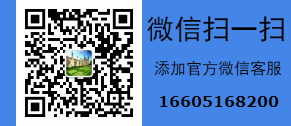初一英语知识点
更新时间:2014-06-07 07:16点击:





初一英语知识点 下载
资料简介
这是初一英语知识点WORD完整下载版,包含初一英语上册和初一英语下册所有单元的知识点。
举例
初一英语下册Unit 12 Don’t eat in class.
一、词组
school rules 学校规章制度 break the rules 违反规章制度 in the hallways 在过道
listen to music 听音乐in the music room 在音乐教室里in the dining hall 在餐厅
sports shoes 运动鞋gym class 体育课after school 放学后have to do 不得不做
too many+名词复数 太多get up 起床by ten o’clock 十点之前make dinner 做饭
go to the children’s palace 去少年宫 be late for…迟到 on school nights 上学的晚上 be in bed 在床上on weekends 在周末 wash my clothes 洗衣服
二、句型
(1)—Don’t arrive late for class.
(2)—We can’t listen to music in the hallways, but we can listen to it outside.
(3)—What else do you have to do? -- We have to clean the classroom.
(4)--Can we wear hats in school? --Yes, we can/ No, we can’t.
(5)-Do you have to wear a uniform at school? --Yes, we do /No, we don’t.
(6) What are the rules at your school?
重难点精析
祈使句
通常用来表示命令、请求、禁止、建议、警告等语气。它的主语you(听话人)通常省略。其构成通常有以下几种形式。
1)Be型(即系动词原型be+表语+其他)。
如:Be quiet, please.
否定句Don’t + be+表语+其他。
如:Don’t be angry.
2)Do型(即系动词原形+宾语+其他)。如:
Open you books, please.
否定句Don’t +实义动词原形+宾语+其他。
如:Don’t eat in the classroom.
3)Let型(即Let+宾语+动词原形+其他)如:
Let me help you.
Let’s go at six o’clock.
否定句一般在宾语后加not。如:
Let’ not watch TV.
4)No+V-ing型(此种形式通常用于公共场合的提示语中,意为“禁止做某事“)如:
No smoking! 严禁吸烟! No talking! 不许交谈!
No passing! 禁止通行! No parking! 不许停车
(责任编辑:谷雨英语单词速记网)
资料简介
这是初一英语知识点WORD完整下载版,包含初一英语上册和初一英语下册所有单元的知识点。
举例
初一英语下册Unit 12 Don’t eat in class.
一、词组
school rules 学校规章制度 break the rules 违反规章制度 in the hallways 在过道
listen to music 听音乐in the music room 在音乐教室里in the dining hall 在餐厅
sports shoes 运动鞋gym class 体育课after school 放学后have to do 不得不做
too many+名词复数 太多get up 起床by ten o’clock 十点之前make dinner 做饭
go to the children’s palace 去少年宫 be late for…迟到 on school nights 上学的晚上 be in bed 在床上on weekends 在周末 wash my clothes 洗衣服
二、句型
(1)—Don’t arrive late for class.
(2)—We can’t listen to music in the hallways, but we can listen to it outside.
(3)—What else do you have to do? -- We have to clean the classroom.
(4)--Can we wear hats in school? --Yes, we can/ No, we can’t.
(5)-Do you have to wear a uniform at school? --Yes, we do /No, we don’t.
(6) What are the rules at your school?
重难点精析
祈使句
通常用来表示命令、请求、禁止、建议、警告等语气。它的主语you(听话人)通常省略。其构成通常有以下几种形式。
1)Be型(即系动词原型be+表语+其他)。
如:Be quiet, please.
否定句Don’t + be+表语+其他。
如:Don’t be angry.
2)Do型(即系动词原形+宾语+其他)。如:
Open you books, please.
否定句Don’t +实义动词原形+宾语+其他。
如:Don’t eat in the classroom.
3)Let型(即Let+宾语+动词原形+其他)如:
Let me help you.
Let’s go at six o’clock.
否定句一般在宾语后加not。如:
Let’ not watch TV.
4)No+V-ing型(此种形式通常用于公共场合的提示语中,意为“禁止做某事“)如:
No smoking! 严禁吸烟! No talking! 不许交谈!
No passing! 禁止通行! No parking! 不许停车
相关文章




 QQ客服1:2151239526
QQ客服1:2151239526  | 苏ICP备06011263号|
| 苏ICP备06011263号| 
